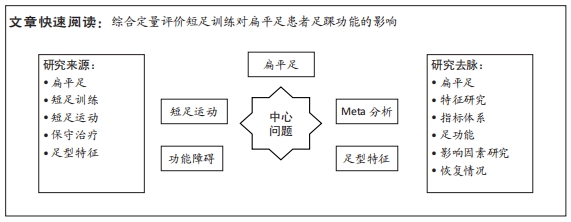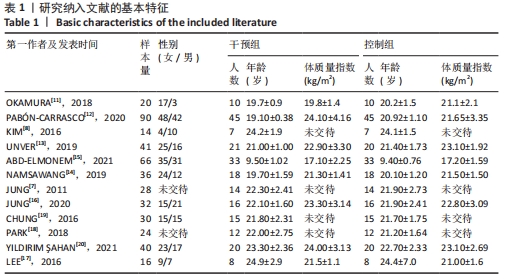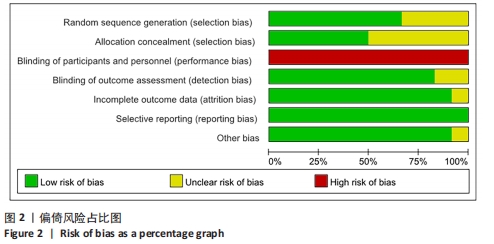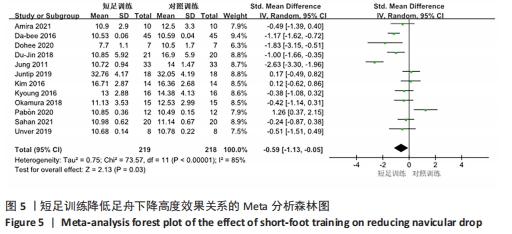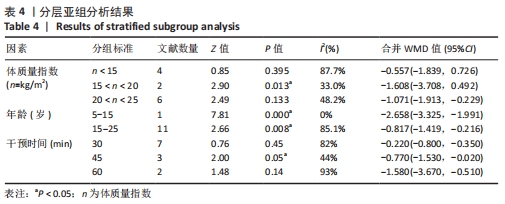[1] BORDIN D, DE GIORGI G, MAZZOCCO G, et al. Flat and cavus foot, indexes of obesity and overweight in a population of primary-school children. Minerva Pediatr. 2001;53(1):7-13.
[2] SICHTING F, HOLOWKA NB, HANSEN OB, et al. Effect of the upward curvature of toe springs on walking biomechanics in humans. Sci Rep. 2020;10(1):14643.
[3] FILARDI V. Flatfoot and normal foot a comparative analysis of the stress shielding. J Orthop. 2018;15(3):820-825.
[4] KODITHUWAKKU ARACHCHIGE SNK, CHANDER H, et al. Flatfeet: Biomechanical implications, assessment and management. Foot (Edinb). 2019;38:81-85.
[5] PITA-FERNANDEZ S, GONZALEZ-MARTIN C, ALONSO-TAJES F, et al. Flat Foot in a Random Population and its Impact on Quality of Life and Functionality. J Clin Diagn Res. 2017;11(4): LC22-LC27.
[6] 崔科东. 12周足弓功能训练结合跑姿转换对足部形态及功能的影响[D].上海:上海体育学院,2019.
[7] JUNG DY, KOH EK, KWON OY. Effect of foot orthoses and short-foot exercise on the cross-sectional area of the abductor hallucis muscle in subjects with pes planus: a randomized controlled trial. J Back Musculoskelet Rehabil. 2011;24(4):225-231.
[8] KIM EK, KIM JS. The effects of short foot exercises and arch support insoles on improvement in the medial longitudinal arch and dynamic balance of flexible flatfoot patients. J Phys Ther Sci. 2016;28(11):3136-3139.
[9] 周旭毓,方积乾. Meta分析的常见偏倚[J].循证医学,2002,2(4):216-220.
[10] MOHER D, LIBERATI A, TETZLAFF J, et al. Preferred reporting items for systematic reviews and meta-analyses: the PRISMA statement. Ann Intern Med. 2009;151(4):264-269.
[11] OKAMURA K, KANAI S, HASEGAWA M, et al. The effect of additional activation of the plantar intrinsic foot muscles on foot dynamics during gait. Foot (Edinb). 2018;34:1-5.
[12] PABÓN-CARRASCO M, CASTRO-MÉNDEZ A, VILAR-PALOMO S, et al. Randomized Clinical Trial: The Effect of Exercise of the Intrinsic Muscle on Foot Pronation. Int J Environ Res Public Health. 2020;17(13):4882.
[13] UNVER B, ERDEM EU, AKBAS E. Effects of Short-Foot Exercises on Foot Posture, Pain, Disability, and Plantar Pressure in Pes Planus. J Sport Rehabil. 2019;29(4):436-440.
[14] NAMSAWANG J, EUNGPINICHPONG W, VICHIANSIRI R, et al. Effects of the Short Foot Exercise With Neuromuscular Electrical Stimulation on Navicular Height in Flexible Flatfoot in Thailand: A Randomized Controlled Trial. J Prev Med Public Health. 2019;52(4): 250-257.
[15] ABD-ELMONEM AM, EL-NEGAMY EH, MAHRAN MA, et al. Clinical and radiological outcomes of corrective exercises and neuromuscular electrical stimulation in children with flexible flatfeet: A randomized controlled trial. Gait Posture. 2021;88:297-303.
[16] JUNG D, YI C, CHOI WJ, et al. Effect of dynamic guidance-tubing short foot gait exercise on muscle activity and navicular movement in people with flexible flatfeet. NeuroRehabilitation. 2020;47(2):217-226.
[17] LEE DB, CHOI JD. The Effects of Foot Intrinsic Muscle and Tibialis Posterior Strengthening Exercise on Plantar Pressure and Dynamic Balance in Adults Flexible Pes Planus. Physical Therapy Korea. 2016;23(4):27-37.
[18] PARK DJ, PARK SY. Comparison of Subjects with and without Pes Planus during Short Foot Exercises by Measuring Muscular Activities of Ankle and Navicular Drop Height. J Korean Soc Phys Med. 2018;13(3):133-139.
[19] CHUNG KA, LEE E, LEE S. The effect of intrinsic foot muscle training on medial longitudinal arch and ankle stability in patients with chronic ankle sprain accompanied by foot pronation. Physical Therapy Rehabilitation Science. 2016; 5(2):78-83.
[20] YILDIRIM ŞAHAN T, AYDOĞAN ARSLAN S, DEMIRCI C, et al. Comparison Of Short-Term Effects Of Virtual Reality and Short Foot Exercises In Pes Planus. Foot (Edinb). 2021; 47:101778.
[21] OKAMURA K, FUKUDA K, OKI S, et al. Effects of plantar intrinsic foot muscle strengthening exercise on static and dynamic foot kinematics: A pilot randomized controlled single-blind trial in individuals with pes planus. Gait Posture. 2020;75:40-45.
[22] MCKEON PO, FOURCHET F. Freeing the foot: integrating the foot core system into rehabilitation for lower extremity injuries. Clin Sports Med. 2015;34(2):347-361.
[23] MCKEON PO, HERTEL J, BRAMBLE D, et al. The foot core system: a new paradigm for understanding intrinsic foot muscle function. Br J Sports Med. 2015;49(5):290.
[24] CHANG JH, WANG SH, KUO CL, et al. Prevalence of flexible flatfoot in Taiwanese school-aged children in relation to obesity, gender, and age. Eur J Pediatr. 2010;169(4):447-452.
[25] HALLEMANS A, DE CLERCQ D, VAN DONGEN S, et al. Changes in foot-function parameters during the first 5 months after the onset of independent walking: a longitudinal follow-up study. Gait Posture. 2006;23(2):142-148.
[26] SNYDER KR, EARL JE, O’CONNOR KM, et al. Resistance training is accompanied by increases in hip strength and changes in lower extremity biomechanics during running. Clin Biomech (Bristol, Avon). 2009;24(1):26-34.
[27] MICKLE KJ, STEELE JR, MUNRO BJ. The feet of overweight and obese young children: are they flat or fat. Obesity (Silver Spring). 2006; 14(11):1949-1953.
[28] ANDREASEN J, MØLGAARD CM, CHRISTENSEN M, et al. Exercise therapy and custom-made insoles are effective in patients with excessive pronation and chronic foot pain--a randomized controlled trial. Foot (Edinb). 2013;23(1):22-28.
[29] MURLEY GS, MENZ HB, LANDORF KB. Foot posture influences the electromyographic activity of selected lower limb muscles during gait. J Foot Ankle Res. 2009;2:35.
[30] CHOUGALA A, PHANSE V, KHANNA E, et al. Screening of body mass index and functional flatfoot in adult: an observational study. Int J Physiother Res. 2015;3(3):1037-1041.
[31] WILLIAMS DS 3RD, TIERNEY RN, BUTLER RJ. Increased medial longitudinal arch mobility, lower extremity kinematics, and ground reaction forces in high-arched runners. J Athl Train. 2014;49(3):290-296.
[32] IRVING DB, COOK JL, YOUNG MA, et al. Obesity and pronated foot type may increase the risk of chronic plantar heel pain: a matched case-control study. BMC Musculoskelet Disord. 2007;8:41.
[33] NIELSEN MD, DODSON EE, SHADRICK DL, et al. Nonoperative care for the treatment of adult-acquired flatfoot deformity. J Foot Ankle Surg. 2011;50(3):311-314.
[34] EVANS AM, COPPER AW, SCHARFBILLIG RW, et al. Reliability of the foot posture index and traditional measures of foot position. J Am Podiatr Med Assoc. 2003;93(3):203-213.
[35] PAYNE C, OATES M, NOAKES H. Static stance response to different types of foot orthoses. J Am Podiatr Med Assoc. 2003;93(6):492-498.
[36] MCLEAN SG, FELLIN RE, SUEDEKUM N, et al. Impact of fatigue on gender-based high-risk landing strategies. Med Sci Sports Exerc. 2007;39(3):502-514.
[37] MULLIGAN EP, COOK PG. Effect of plantar intrinsic muscle training on medial longitudinal arch morphology and dynamic function. Man Ther. 2013;18(5):425-430.
[38] JUNG DY, KIM MH, KOH EK, et al. A comparison in the muscle activity of the abductor hallucis and the medial longitudinal arch angle during toe curl and short foot exercises. Phys Ther Sport. 2011;12(1):30-35.
[39] 张新语,霍洪峰.足姿指数(FPI):足部姿势及足踝功能的定量表达[J].中国矫形外科杂志,2019,27(13):1194-1199.
[40] REDMOND AC, CROSBIE J, OUVRIER RA. Development and validation of a novel rating system for scoring standing foot posture: the Foot Posture Index. Clin Biomech (Bristol, Avon). 2006;21(1):89-98.
|
